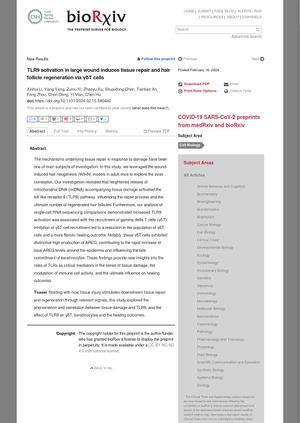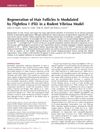TLR9 Activation in Large Wound Induces Tissue Repair and Hair Follicle Regeneration via Gamma Delta T Cells
February 2024
in “
bioRxiv (Cold Spring Harbor Laboratory)
”

TLDR Activating TLR9 helps heal large wounds and regrow hair by involving a specific type of immune cell.
The study "TLR9 activation in large wound induces tissue repair and hair follicle regeneration via gamma delta T cells" investigates the mechanisms of tissue repair following damage, using wound-induced hair neogenesis models in adult mice. The research found that tissue damage leads to an increased release of mitochondrial DNA (mtDNA), which activates the toll-like receptor 9 (TLR9) pathway. This activation influences the repair process and the number of regenerated hair follicles. The study also found that increased TLR9 activation is associated with the recruitment of gamma delta T cells (γδT). Inhibiting the recruitment of these cells resulted in a more fibrotic healing outcome. These γδT cells produce high levels of AREG, which influences the fate commitment of keratinocytes. The findings suggest that TLRs play a crucial role in tissue damage sensing, immune cell activity modulation, and healing outcomes.
